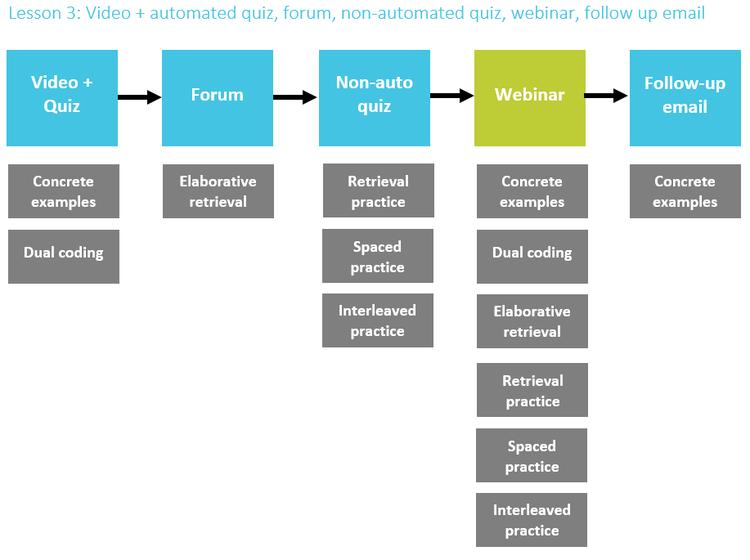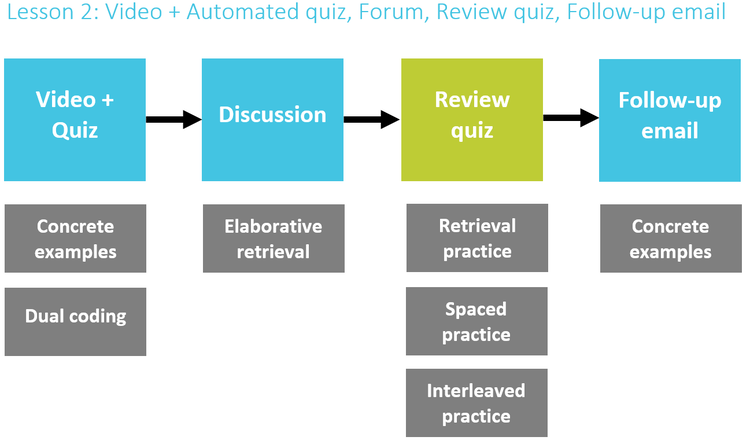 Fall is upon us and we are expected to keep on distancing. Many teachers have probably prepared courses with this in mind. In this post, I’d like to collect some good advice researchers and teachers have published during the summer.
Fall is upon us and we are expected to keep on distancing. Many teachers have probably prepared courses with this in mind. In this post, I’d like to collect some good advice researchers and teachers have published during the summer.
During the Spring I wrote a post about teaching online with some guidelines that are still relevant. As I work with teachers who are moving their teaching practice into the distance domain I can assure you that it takes time to rethink your practice. Ideally, teachers in higher education would have more time allotted for planning distance courses and for providing feedback and guidance.
First of all, you have to know the content you are teaching to make it relevant to your students. Second, you need to learn as much as you can about the digital learning environments you use. Your third task is making sure the content and the learning environments support the students’ learning. You may still struggle after all this.
I came upon a new problem when a colleague of mine logged into Zoom through a seminar room at Academill while I and my students were at our computers. I wasn’t able to access the breakout rooms function. I checked, yes, I was logged in as host. I logged in again just to be sure. After that, the only thing I could think of was that my colleague had to log out of the Academill Zoom-room and only use her computer for access. It turned out to be the issue. The point is that even if you know the technology it still plays tricks on you sometimes. Solving problems is part of using technology. If you get stuck you can always ask your students to take a 15-minute break and try to solve it with the help of your digi-mentor or colleagues. Breaks are good to take anyways. 🙂
When it comes to distance education you have several options to choose from. Leonard Houx wrote a good post about how to plan your online lessons. He points out that you need to consider how to use the course material and assignments so they support students to rehearse and implement what they’ve learned. This is what he calls examples, dual coding, elaborative questions, retrieval practice and so on:
- Concrete examples: illustrate ideas with examples that students can easily grasp
- Dual coding: integrate words with images
- Elaborative questions: ask questions that help students connect new learning with prior learning
- Retrieval practice: have students practice with test questions on what they remember
- Interleave practice: mix practice test questions from a variety of lessons
- Space practice: delay interval periods between practice tests
Houx uses different examples depending on if you are planning a fully asynchronous course with no online meetings, or if you have synchronous meetings as part of the course design besides the individual or collaborative tasks. Take a look at these lessons and maybe you realize how much work it takes to create all of this in for example Moodle.
 You need to study the content and decide what kind of assignments are suitable and relevant. Your students are probably struggling with the content at times, which is why these kinds of outlines are important to help them identify what they need to study further and what part of the content they know fairly well after completing the individual/collaborative tasks.
You need to study the content and decide what kind of assignments are suitable and relevant. Your students are probably struggling with the content at times, which is why these kinds of outlines are important to help them identify what they need to study further and what part of the content they know fairly well after completing the individual/collaborative tasks.
Jennifer Green, Marla Burrow and Lucila Carvalho published a great article in August (2020) on the transition forced upon teachers and students, Designing for Transition: Supporting Teachers and Students Cope with Emergency Remote Education. This is important because what most teachers are doing is not distance education – moving your lectures to Zoom in a hurry or handing out assignments for students to complete on their own is emergency remote education, but it’s not a good distance education. Take a look at the outlines Houx suggests and perhaps you see my point. Distance education means rethinking how to present content and materials, how to design assignments, feedback and learning environments. Asynchronous tasks are as important as synchronous ones.
Breakout rooms in Zoom can be a good choice but if tasks are not structured and planned for properly it can become a chaotic and boring experience for all involved. Green, Burrow and Carvalho give an example of a good breakout session:
A shift into breakout rooms has the potential to be a harrowing participant experience if not managed well. It is essential to provide clear direction, both written and spoken, prior to moving participants into breakout rooms, so that activities and expectations are understood by all and therefore able to be achieved. Once in the breakout rooms, each with 3–4 participants, a low stakes task was proposed (epistemic design), which involved participants introducing themselves and discovering whose birthday was closest to that day’s date, with that person becoming the leader for subsequent group activity. These tasks were based on teaching engagement strategies that students would experience in their course activities in the upcoming months (e.g. working in groups, assuming different roles within a group and participating in quizzes) and involved students using elements of the platform (set design) that would be used in the phase 3 teaching, when the courses in the Bachelor of Nursing programme were live.
Green, Burrow and Carvalho (2020) suggest a good list for those involved in emergency remote teaching. Setting up a team of colleagues to face this together is a very good start. Team teaching is something we should stick to post-corona too, by the way, it’s a great way to share the workload and develop the teaching practice:
- Plan for a phased design that gradually introduces elements of set, social and epistemic design.
- Keep it simple to avoid overwhelming learners, include only a few elements at a time.
- Start with a ‘low stakes’ learning task, with an element of fun—it helps with the affective mood as well as with focus on learning about new elements rather than disciplinary knowledge content.
- Work on conviviality and inclusion with tasks that allow multiple voices to be heard.
- Bring the affective to the fore, offering safe opportunities to discuss issues (including anonymously) and use these as the basis for jointly exploring potential solutions.
- Offer printable resources for those with low connectivity or using small devices.
- Use visual cues, for learners and educators, to signal movement between learning spaces, e.g. the use of icons in a PDF to indicate a task and where it will take place—breakouts, plenary, and polling site.
- Privilege tasks and resources that require low bandwidth.
- Whenever possible, embrace team teaching—it allows for novice-apprentice exchanges.
- Organize staff discussions about their experiences—it allows for learning new pedagogical strategies and ways to tackle problems, and builds a sense of a community.
Teachers in different educational settings have expressed concerns during the Spring term relating to the low quality of teaching online and many are very tired already. Thomas Ryberg professor at Aalborg University in Denmark pointed out that Open University in the UK, which has been working with distance education since 1969, spends about two years on developing distance courses and they have teams of different experts (teachers, IT-personnel, administrators, etc.) to do it. No wonder teachers with no distance experience or training feel tired and overwhelmed. Take care of yourself, your students and your colleagues – together we will get through this although it feels like a bumpy ride at times.


